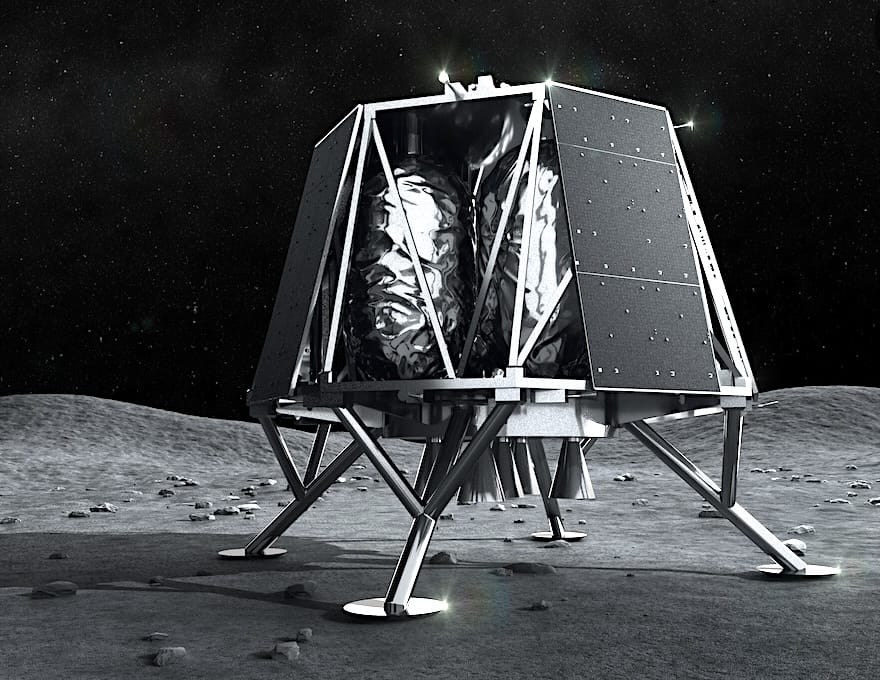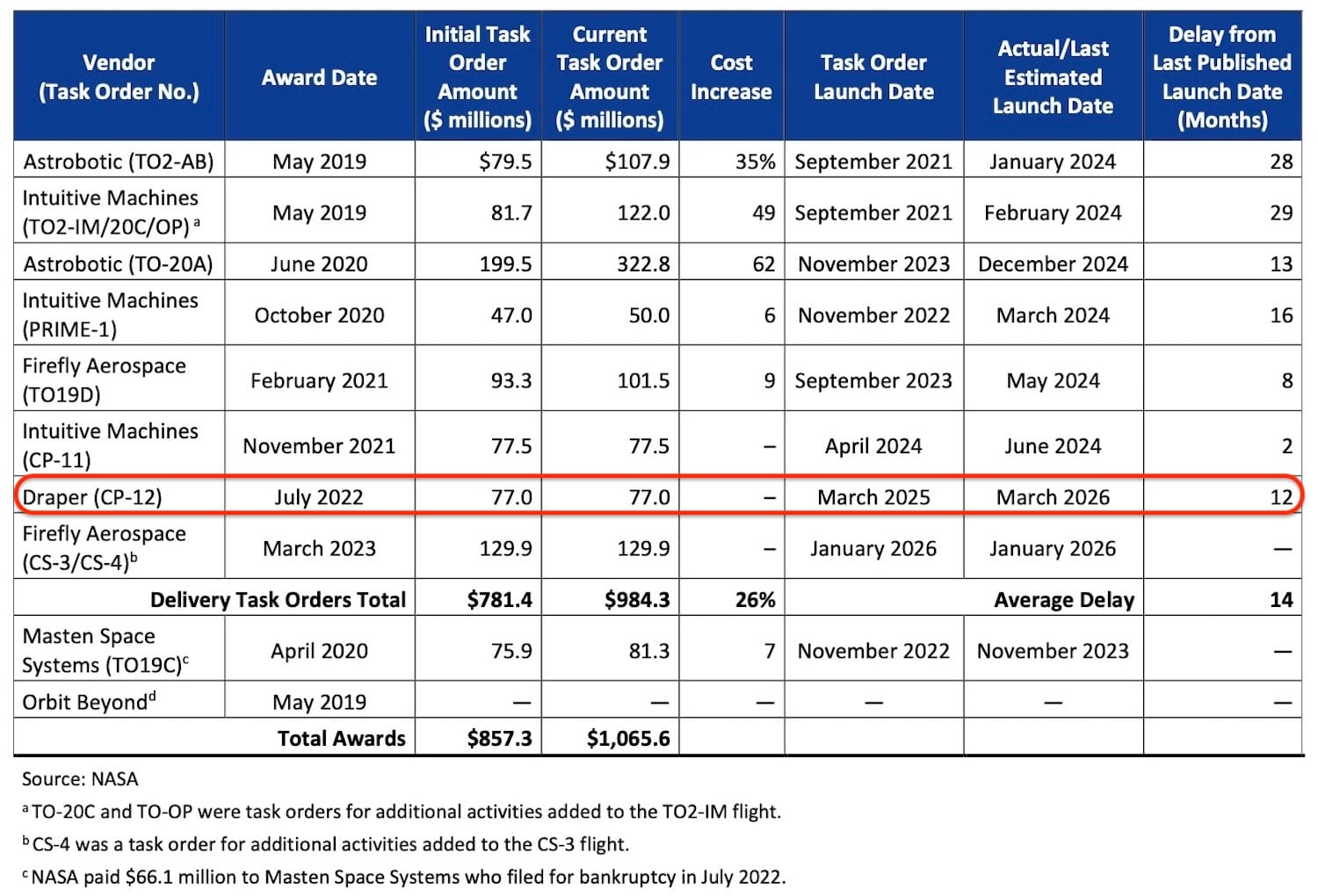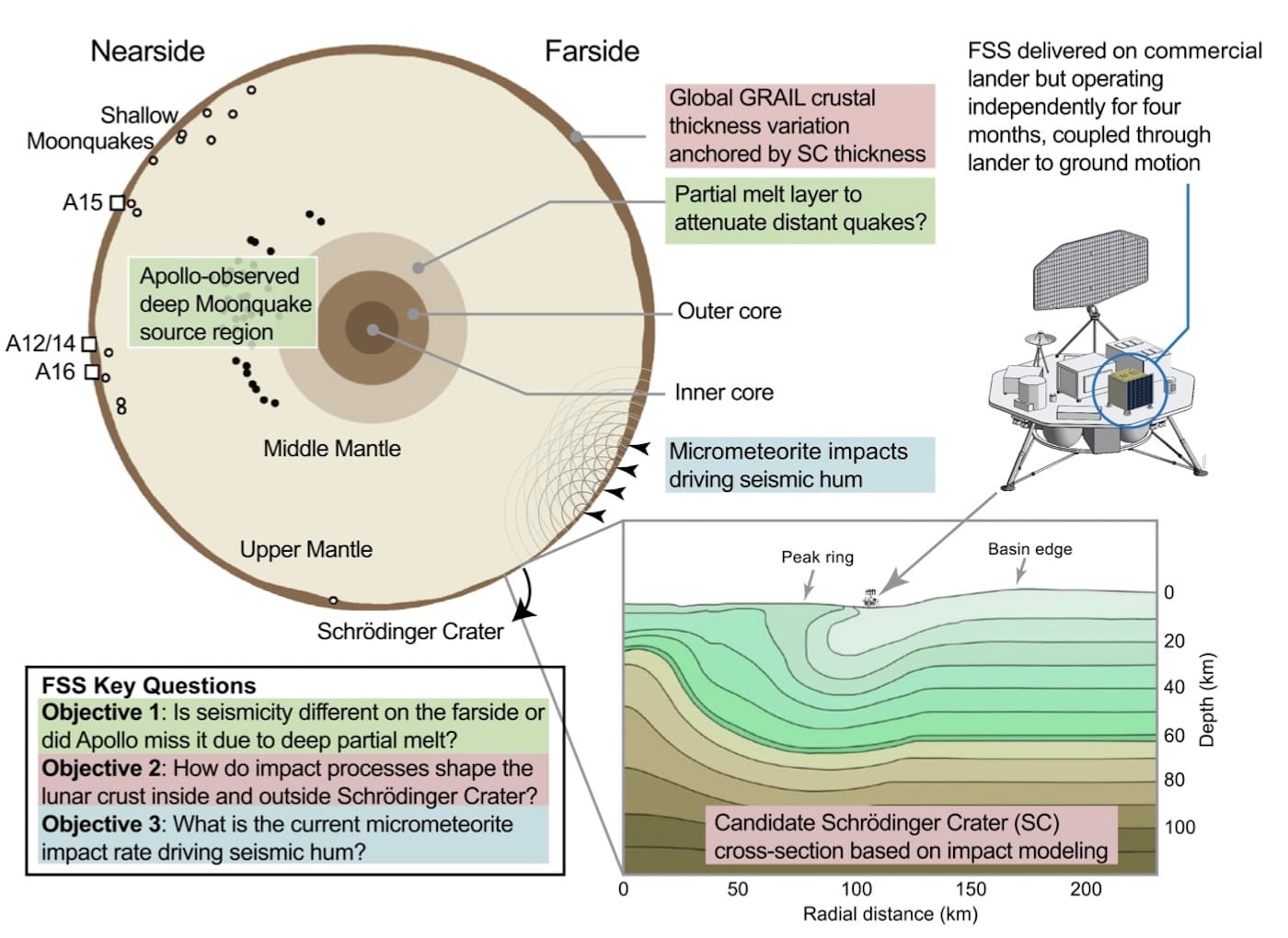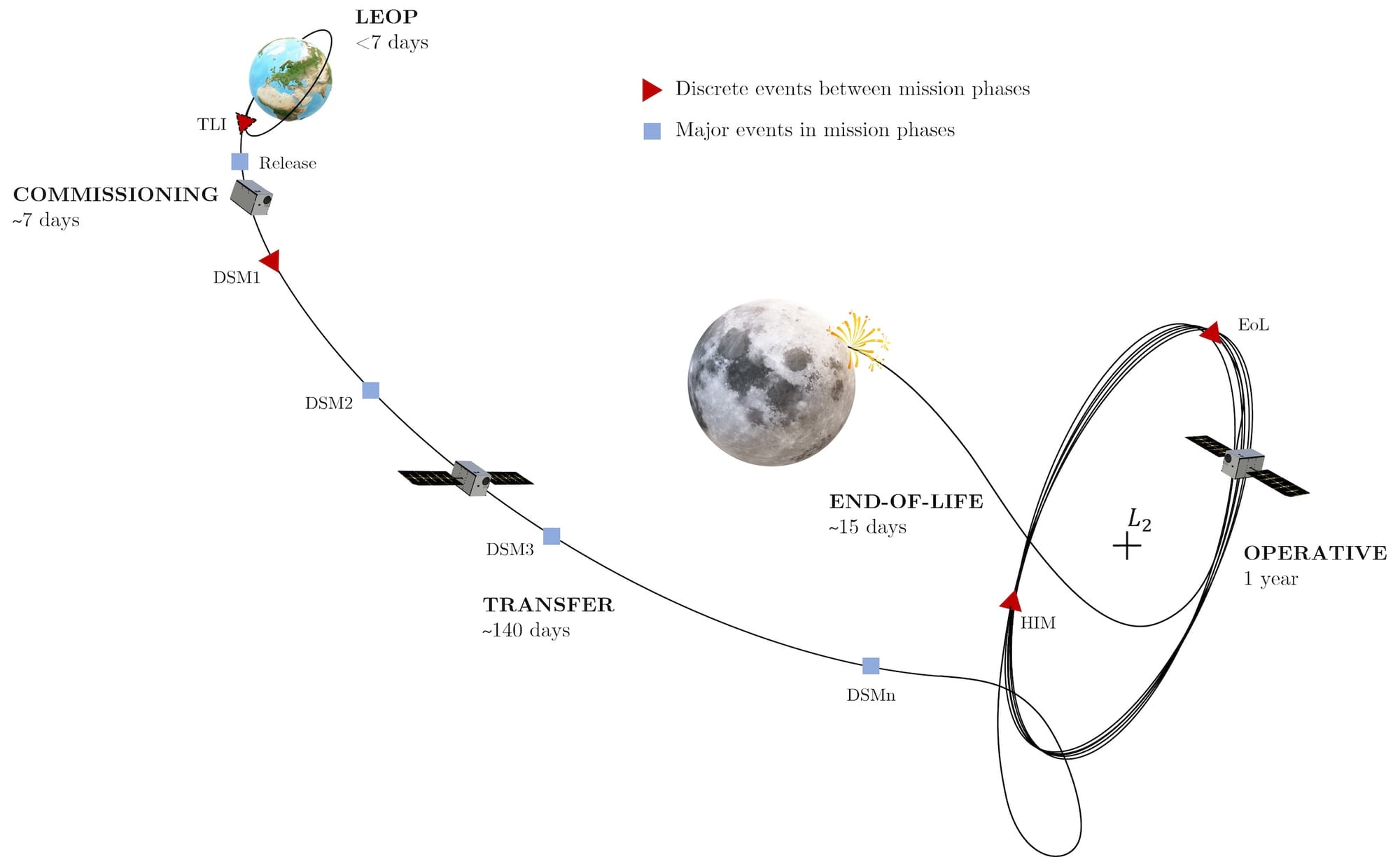Moon Monday #184: Funding farside ventures, lunar traffic, and Moon Monday in video!
On the intersection of ispace, NASA CLPS, funding, and science

The publicly traded ispace Japan is taking another loan from the Sumitomo Mitsui Banking Corporation, amounting to $62 million, to continue working on its upcoming three Moon missions:
- The company’s second lunar lander M2/RESILIENCE, launching end of 2024
- The Draper-led Moon mission part of NASA’s CLPS program targeting a 2026 launch, wherein ispace’s US subsidiary is providing the large APEX lander. ispace US is also providing ground communications and relay services for the mission.
- Another Moon landing mission by ispace Japan targeting a 2027 launch
While ispace’s progress on M2/RESILIENCE has been going well on both the lander and the rover front, it’s Draper’s first CLPS mission targeting touchdown on the Moon’s farside which has been a driver of capital raises for ispace. In April, the company announced taking a bridge loan of $45 million from Sumitomo Mitsui to majorly continue work on Draper’s CLPS mission. Jeff Foust reported in March that ispace raised $53.5 million through a stock sale, $47 million of which is being used for the Draper mission too. ispace’s share of Draper’s $77 million CLPS contract is supposedly $55 million.
ispace has needed these multiple investments not only due to the resource intensive nature of doing Moon missions but that, as revealed in a recent report on CLPS published by NASA’s Office of Inspector General, ispace US had to redesign the APEX lander to accommodate the needs of the NASA payloads on the mission:
Draper’s lander development progress was impacted by lander redesigns that caused a 12-month schedule delay. Draper subcontracted the lander’s design and development tasks to ispace, inc. (ispace). According to a NASA official, ispace’s original lander design was too small and not adequate for any CLPS delivery. ispace later redesigned a bigger lander, but it still did not meet the payload requirements. [...] Draper experienced significant schedule delays due to lander redesigns and when a major subcontractor fell behind schedule in obtaining external capital investments.
To that end, some amount of ispace’s two loans from Sumitomo Mitsui will go towards the Draper CLPS mission too. The latest capital raise—including a previous $80 million Japanese government grant to launch a large lunar lander by 2027—brings ispace’s cumulative investment to about $490 million, probably the highest for a lunar company.
There’s a silver lining for science on the Draper-led CLPS mission since the extra capital raised by ispace to continue mission development doesn’t (yet) seem to have cost significant additional money to NASA over the original contract, unlike the case of several other CLPS missions including the first ones that flew this year from Astrobotic and Intuitive Machines.

Note that while the table above shows Draper’s $77 million contract value being unchanged despite additional work required on lander development, NASA’s original announcement of the CLPS task order states a contract value of $73 million. While not clear, this $4 million difference might be due to ispace having to meet specific vibrational requirements of the NASA-funded payloads onboard.
Science
The science end of the Draper-led CLPS mission has been progressing well. The two distinct seismometers to be aboard the ispace-provided lander to the geologically fascinating Schrödinger crater on the Moon’s farside recently passed the slew of space launch and environmental tests. The “Farside Seismic Suite” (FSS) payload suite is thus ready to fly. Data from over four months of its operations, combined with seismic measurements from the upcoming missions of Chang’e 7, Chang’e 8 and Artemis III will help scientists better understand the Moon’s internal structure and how it evolved. FSS will also help us know the rate of seismic activity and amount of micrometeorite impacts on the Moon’s farside, which is not well constrained at the moment but is needed to understand its potential impacts on human and robotic lunar exploration.

The mission lander will also carry a drill, a probe, and a magnetic sounder to measure the farside crust’s internal heat flow and electrical conductivity in a way that will resolve some murkiness of its structure. And there’s an experiment to study electric and magnetic properties in the region, which being shielded from Earth’s electromagnetic interference is apt for studying the solar wind’s interactions with the lunar surface, and for characterizing the Moon’s radio emissions for lunar-based radio astronomy like studying cosmology and habitable exoplanets.
And so, if ispace and Draper ultimately manage to deliver the lander to Luna and operate its instruments without NASA paying for work the agency didn’t task by itself, the mission would be a clear demonstration of the CLPS model working as intended; with the companies getting the fixed returns they originally proposed in their CLPS bids and researchers getting unique scientific lunar data at low costs and reasonably fast turnarounds.
Many thanks to Astrolab and Tim Glotch for sponsoring this week’s Moon Monday. If you love this curated community resource too, join them and support independent writing and journalism.
Coordinating lunar traffic
At the Secure World Foundation’s Summit for Space Sustainability, a KARI researcher presented on July 11 how NASA, ISRO, and KARI have been voluntarily sharing information about the exact trajectories of their active (near-)polar lunar orbiters. The agencies use the NASA MADCAP software to predict and get notified about uncomfortably close approaches between the orbiters after which a decision can be taken for one of the craft to perform a diversion maneuver. KARI has made South Korea’s first lunar orbiter KPLO perform four such maneuvers so far, including one to avoid a close approach to Japan’s SLIM spacecraft before its Moon landing—for which decisions were taken within a day.

Recall that in October 2021, ISRO commanded its Chandrayaan 2 orbiter to change its orbit slightly for avoiding an uncomfortably close approach of about 3 kilometers to NASA’s Lunar Reconnaissance Orbiter (LRO). In the May 2023 summary of India’s space activities, ISRO mentioned that on its request the LRO team postponed their spacecraft’s “Momentum Dumping” plan to avoid more such uncomfortably close conjunctions. An August 2023 blog post by ISRO alluding to the importance of managing growing lunar traffic mentioned the Chandrayaan 2 orbiter maneuvering to avoid a close approach to KPLO. Per the May 2024 monthly summary of Indian space activities, ISRO performed two more such maneuvers this past May to avoid running into KPLO.
More mission updates
- For a different kind of lunar impacts, ESA has approved the LUMIO (Lunar Meteoroid Impacts Observer) CubeSat mission. As its name suggests, LUMIO will monitor flashes of meteorite impacts, particularly on the Moon’s farside to determine its poorly constrained rate and potential impact (pun intended) to long-term robotic and crewed exploration. ESA aims to launch LUMIO in 2027 to the second Earth-Moon Lagrangian point (L2), from where it can continuously look at the Moon’s farside. The CubeSat also aims to demonstrate autonomously determining its position in space and navigating accordingly, independent of communications with Earth.

- For the mid-decade Artemis II mission, which will push four astronauts in an Orion capsule around the Moon and back, NASA has selected astronaut Andre Douglas as a backup crew member for the three NASA astronauts on the flight. Relatedly, CSA announced in November last year that astronaut Jenni Gibbons will be Jeremy Hansen’s backup for Canada’s seat on the mission. Hansen is flying in return for CSA contributing the Canadarm3 robotic servicing system to the Gateway, which is an upcoming NASA-led international lunar orbital habitat.
- Jeff Foust reports that an internal confirmation review conducted by NASA on the readiness of SpaceX’s Lunar Starship gives the agency’s Artemis III crewed Moon landing mission a 70% chance of launch by February 2028, nearly a year and a half later than the current public date of September 2026.
More Moon
- Andrew Jones reports that Kazakhstan became the 12th country to join the China-led long-term scientific base on the Moon’s south pole called the International Lunar Research Station (ILRS). The two countries will explore using Kazakhstan’s iconic launch site Baikonur cosmodrome for lunar missions. Also, Sri Lanka’s Supreme Deep Space Pvt. Ltd. joined ILRS in June as the 13th non-nation organization, wherein in return for participating in China’s lunar missions, Supreme Deep Space intends to provide ground communications support for missions. And, researchers from both countries aim to collaborate on 3D-printing lunar infrastructure.
- NASA’s ARES division is hiring a Subject Matter Expert to conduct research on lunar samples & analogs and support of human & robotic Moon missions.
- Related tangent: ARES-developed Astromaterials 3D lets you (virtually) hold Moon rocks
- Join the July 20 International Moon Day celebrations in China, Germany, and around the world and tell people why we must explore our Moon! 🌝
Moon Monday but in video!
There’s now a comprehensive video on China’s insane scientific and technological advances in exploring the Moon. It’s based on 7 editions of my Moon Monday blog+newsletter, made in collaboration with the popular YouTube channel “The Space Race”. Sean and team did a great job at adapting my writing to something I’d never do. For those of you who wanted me to make videos, this is as close as you get and you will ever get. 🌝
